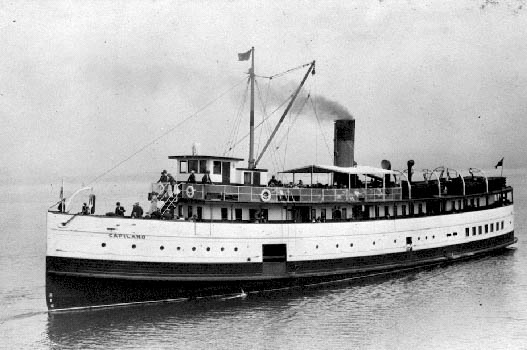The SS Capilano was a small steel coastal freight and passenger steamship (36.5 meters long and 6.76 meters wide, 157 registered tons) built in 1891 for the Union Steamship Company. The ship was built in Scotland in 1891-92 to provide cargo/passenger transport from Vancouver to settlements located further north along the coast. The S.S. Capilano, carrying a full load of passengers, cattle, and horses, became the first steamer from Vancouver to participate in the Klondike gold rush on July 22, 1897.
The wreck lies in 37 meters (121 feet) of water on the south side of Grant Reefs, between Savary and Harwood Islands in the Strait of Georgia, which separates Vancouver Island from British Columbia’s mainland and is considered an Advanced Dive.
On September 29, 1915, at 9:25 p.m., the Capilano collided with a submerged object. Crew members believed the Capilano had smashed into a log. The ship proceeded to a small port for an inspection; everything appeared to be in order, and the Capililano continued on its journey. The ship began to list to port around 1:30 a.m. on October 1st, 1915 and the crew found 2 feet of water aboard. The crew abandoned ship in a large lifeboat at 3 a.m., and the Capilano sank by 5:30 a.m. The ship was undiscovered for 60 years before being found by a fisherman in 1975.

The Capilano is also regarded as one of the best wreck dives on the coast of British Columbia. The fact that it remained relatively intact and undisturbed from the time of its loss in 1915 until its discovery in 1973 adds significant value. The vessel’s steel hull, along with all of its machinery and rigging equipment, remains upright on a flat sand/shell bottom five miles off Harwood Island.
The wreck of the Capilano, which is covered in plumose anemones and home to large lingcod and yellow eye rockfish, is also valued for the abundance of sea life in and on it.
Big Animal Encounters @ YouTube






